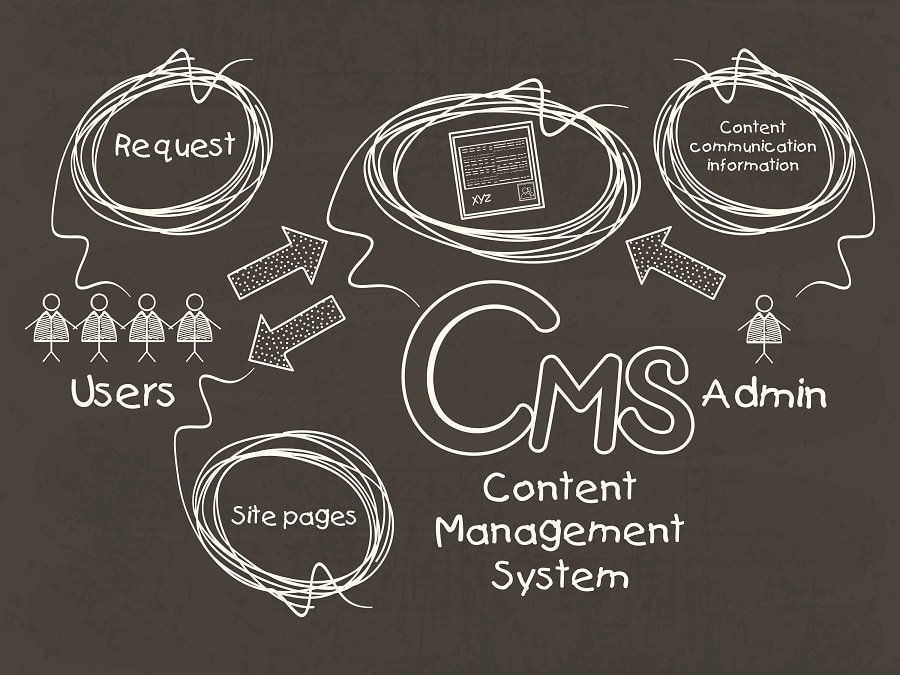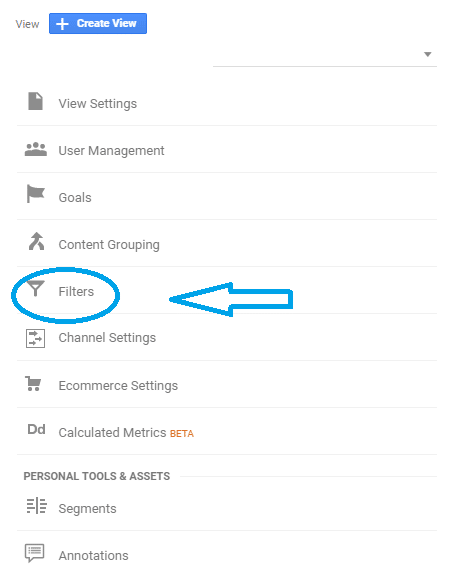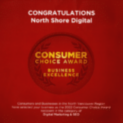What is this?
Our guide provides a framework to help small and medium businesses establish a strategic approach to their content marketing.
Who is this for?
Our examples & case studies in this guide are primarily based on our clients in North & West Vancouver (SMEs, sole proprietors and professionals such as real estate agents and public speakers). Even though these samples originate from the North Shore this guide can certainly be applied to similar sized organizations anywhere. If you find yourself pressed for time, this detailed guide is also summarized in our content marketing consulting process.
Let’s Get Started!

What the heck is “Content Marketing” anyway?
Look up “Content Marketing” online and you’ll see 100s of different definitions by dozens of various marketing experts and “gurus”. At its core, content marketing is simply this:
A strategic approach to distributing valuable, educational and relevant content to attract, retain and convert a clearly defined audience.
That’s it! Even though this sounds fairly simple, creating and managing a well oiled content marketing machine requires a fair bit of work and strategy. Hopefully we can help you get there!
Why should your business use content marketing?
Building trust with your audience by providing relevant, engaging, and educational content is an essential part of any organization’s marketing plan. You may very well be creating branded content already but this is just the first step. Optimizing, organizing and delivering this content to a well qualified audience will be key to your ongoing success.
It should be fairly intuitive that customers strongly prefer to engage with companies through articles rather than ads, and valuable content will allow them to see you as an industry leader as you showcase your expertise. This helps to greatly enhance your reputation and creates loyal customers, increases current customer retention, as well as setting you apart from competitors when you can clearly define and articulate your value proposition through content.
Content marketing also helps your prospect conversions. You provide visitors the information they need to make an educated decision directly on your owned platform and marketing channel! Content marketing is a cost efficient lead generation tool.
Content marketing can aid conversions in all parts of the marketing funnel. At the top of the funnel [general information needed] content acts to educate prospects’ solutions to the problem they are looking to solve. In the middle of the funnel [more detailed information required] it shows these leads different options as they start to narrow choices for final purchase and at the bottom of the funnel [specific product & service guides and features] content such as whitepapers and guides can be leveraged to give prospects the final key bit of information needed to empower them for a purchase decision.
Content is a Big factor in SEO. The best SEO strategy is ineffective without content. Relevant, quality content gives your business a higher chance to rank for a range of different keywords and more opportunity for search engines to crawl and index your site and pages.
Recently Google released their “Rank Brain” algorithm which uses machine learning to sort out page ranks. Google puts a fair amount of weight on this algorithm and 2 of its primary factors are dwell time and Click Through Rate. It’s no longer enough just to drive traffic to your website with catchy click bate – you have to engage and retain your visitors with relevant and valuable content on-site.
Finally, high quality content supports and enhances your entire marketing and sales strategy. It can be repurposed for different channels, marketing campaigns, paid media, advertising collateral, social media and more. You can even use it for internal communication and messaging.

Establish your content marketing plan with goals, objectives, strategies and tactics
1 – Perform a situational analysis
This will help you most efficiently integrate a content marketing plan into your current marketing strategy. You’ll have to look at the following inputs;
- Your current team in place. Do you have content creators? Copywriters?
- Your monthly budget. Where is your budget currently spent? Where is it best spent? Should you outsource content creation or have your in-house team handle it?
- Target customer persona. What does this currently look like? Should you be developing content to cater to this consumer profile or do you want to adjust your target market?
- Brand story. What does your brand tone and voice look like and sound like and how can this best be conveyed through content you produce.
- Marketing channels. What marketing channels are you currently using? What works well for you? Is it your web page, blog, etc?
2 – Establish your overall content marketing campaign goals, objectives, strategies and tactics.
This is marketing campaign planning 101 but an essential step to outline and clarify your specific approach to content marketing.
- Your overall campaign goals are the “whats” of your plan. What do you want to achieve? For example, if you happen to be a technology speaker in North Vancouver your goal may be to book more technology speaking engagements.
- Your objectives represent measurable steps or specific targets for your company. In our public speaking example above this may be something like; generate 50% more website form email leads or double traffic of 30-49 year old demographic of Vancouver residents to my technology blog.
- Strategies and tactics are commonly separate categories involved in establishing your marketing plan but they work closely together. This is effectively your approach to satisfying your objectives and which tools you plan to use. For example, create 4 short form blog articles with titles and technology keywords aimed at engaging and educating 40 year olds in Vancouver.
3 – Establish your keyword plan of attack!
It’s important to have an understanding of how well qualified prospects are discovering your business, both online and offline. If you’re using a content marketing strategy that’s tied into SEO you want to figure out your potential customer’s intention when searching for your business, service and product.
Fleshing out high opportunity keywords is a great way to improve your ROI for your content strategy and also develop themes and ideas for your content creation.
4 – Set up analytics & metrics
As data-driven marketers, we believe in measuring everything! The most successful marketing campaigns are informed by data. If you’re investing your time, energy and money into a content marketing strategy, please measure it! This will better inform future content and ensure you keep growing.
- Set up an analytics tool. We recommend Google Analytics. It’s free to use and has a massive community of users and troubleshooting network. It’s also catered to the largest search engine!
- Configure analytics. Create a dashboard that shows you metrics that matter. If one of your objectives was to increase traffic of 30-49 year old Vancouverites then set up your dashboard to show this – custom dashboards ensure you can see your data that matters right away rather than digging and filtering around for it. You should also filter out internal user IP addresses to make sure this isn’t confounding real customer data.
- Establish metrics. These are what you’re measuring on GA. Your success metrics are closely linked to your content marketing tactics.

Set your content creation machine in motion
1 – Plan your content
Your content should be informed by several different inputs. You should use both quantitative and qualitative data to inform your content production plan but don’t let perfect be the enemy of good, especially at the start of your campaign. You will have to experiment and trial different content, strategies and methods to figure out what works and what doesn’t. Experimentation, iteration and flexibility are vital to your success.
Some of the inputs you should factor into your content planning are:
- Previous content analytics data. What worked and what didn’t? Not only what had the most traffic but more importantly the most engagement and what converted into sales/leads.
- Content type. Are you writing a cornerstone article? A long form blog? Generally speaking, longer form content performs better for SEO but it may not be optimal for your audience.
- Topic, title and keywords. This applies even to video where search engines like YouTube rely on descriptions, titles and even keyword terms spoken in the video to sort, rank and show video content. Use your keywords you brainstormed above!
- Audience & voice/tone
- Competitive intelligence. Look at other competitors and industry websites and see what worked for them.
2 – Setup your editorial calendar
An editorial calendar is a great way to organize, optimize and automate your content “machine”. It helps your marketing team stay on the same page and ensures you squeeze every last drop from every piece of quality content you create by distributing it efficiently over multiple channels.
Your editorial calendar depends on several factors including the type, size and frequency of your created content as well as the size of your marketing team as well as content marketing budget and sales cycle.
3 – Get good at copy writing
Or hire a great copywriter or consultant. Writing exceptional, valuable copy is a skill. If you want to keep your visitors engaged with your writing you need to study how. If you don’t have the time or interest to write quality copy I highly recommend outsourcing as this is an essential component of your overall plan. Here are some copy writing tips to get you started:
- Research your article topic! The more informed the article is, with interesting quotes, citations and references to quality information, the more engaging it will be.
- Make it fascinating. Make your article visually appealing, entertaining, tell stories and even add some questions or controversy if it suits your industry.
- Inject your own brand tone and personality.
- Write great headlines.
- Make sure your message is clear and not complicated.
- Use samples. Link and use examples from blogs, articles and websites you admire. Use these as samples for your own copy.
- Focus on benefits.
4 – Optimize for conversions
Once you have completed and proof-read your article for grammar and scintillating copy you can go over once more to ensure it is in the best place to convert.
- Use your analytics data to see which CTA’s your visitors are most engaged by, where content is performing best (maybe your article should be placed on a different blog page on your site)
- Ensure higher conversion rates by interacting with your most engaged visitors (especially those commenting on your article)
- Place CTA’s in copy in strategic locations but don’t overuse as this may dissuade or annoy your visitors. Heatmaps can work very well to figure out optimal locations to place CTA’s
- Create lots of internal links to gently lead your visitors towards your product or service deeper down the marketing funnel.
5 – Optimize for search engines
Checkout our SEO Ready Content article for tips on how to best optimize your piece of content for search engines.
Search engines today are smart! They don’t suffer crappy content. Chances are if you’re writing engaging, interesting contact that has visitors spending a lot of time on your page and clicking through to your product or services offerings you’ll rank higher. But there are definitely a few tips and tricks you can use to get a leg up on your competition!
- Don’t be afraid to be in-depth! Notice anything about this content marketing guide? We go into detail about our service knowledge and topic. This isn’t just coincidence – it’s intention. Comprehensive, long-form content ranks better! Search engines rely on context to help sort and rank pages and websites. The longer a blog post, the more chances Google’s algorithms have to recognize the correct context. There has been a fair bit of controversy recently in SEO land whether or not it is useful to construct a blog with LSI (latent semantic indexing) keywords in mind. LSI is a mathematical technique dating back to the 80s that used a method called singular value decomposition to scan data and identify relationships primarily to correctly file information in databases. Now it’s resurfaced as an SEO technique. The jury is out on whether or not it’s useful for marketers but one thing is for sure – you should definitely ensure you write well enough and long enough to give your piece of content clear context!
- Write evergreen content. That is, content that is always relevant. It’s sometimes fun to be trendy and creating content around industry news has it’s place but you don’t want your major content creation efforts to be useless a few months from now. You want to be able to repurpose and use that content for years! You also want relevance to continually attract new unique page visits to help improve your search rankings over time.
- Answer questions and become snippet bait! A Google “featured snippet” aka “position zero” can be a traffic gold mine for your business. This is the answer to a question that sometimes appears at the very top of the search rankings, appearing above the search results. This is why FAQ’s can be valuable not only to answer customer inquiries but also to qualify for a featured snippet. If you’re using this strategy aim for 40-60 words that answer a question. *Bonus – you can also gun for snippet lists. To do this answer a question in list form and use <h> header tags for each answer.
- Optimize for mobile first! Google’s Mobile First indexing is nigh! Want to know how your site is doing? check out Google’s mobile friendly test.
- EAT. That is, Expertise – Authoritativeness – Trustworthiness. Google evaluates on these factors and you can’t fake them! However you can certainly showcase and enhance your company’s reputability using a few methods. Ensuring you have robust privacy policy and terms of service pages. Include lots of references and external links to reputable sources. Have an easy to find contact page. Employ guest or expert writers.

Analyze, Report, Repeat
1. Configure your analytics tool
One of the primary inputs to your content creation should be your website visitor and customer data. Setting up a tool like Google analytics is only the first step. You need to configure your data measurement tool to ensure you’re capturing real, relevant and clean data.
For most small to medium business owners this requires at least 3 steps. a) filtering out internal IPs b) measuring key events and conversions c) creating relevant and clear reports & dashboards.
In all my examples. I have used Google Analytics as it’s a great choice for small and medium businesses due to the fact that it is free, caters to the largest search engine and is widely used.
a) Setting Google Analytics Filters
Setting filters in Google Analytics is particularly important for smaller business that may be getting a larger percentage of their traffic from “internal” visits such as in-house or consultants editing the website or adding/reviewing content. It’s important to exclude these visits or else they will be included in general visitor data and will confound your reports.
To set a filter in Google Analytics proceed to your GA Admin page. Select the Account, Property and View you wish to set filters for (a note; if you only have 1 view it is recommended you create a second view as having a general “all website data” view is good practice to compare data and ensure your subsequent views are properly configured).
Next, under your selected View, click on “filters”

Next click on the +Add Filter tab at the top left then configure your filter by selecting the radio button “Create New Filter“, Name your filter (in the image below I have named it “Office Marketing Team” to ensure it’s clear who is being excluded in this particular filter) configure the filter type (predefined, exclude, IP Address, equal to) and then enter your IP address (if you don’t know it, simply type in “my IP” in the google search bar). In the image below I have selected the proper configuration:

That’s it! Your filter should now be set. If you would like to test it, you can go into Real Time reporting section and see if your visit is recorded (assuming you filtered your own IP address). If it ISN’T then that means you are good to go!
b) Measuring Events
Earlier in this guide, we established overall content marketing objectives. Remember that objectives are specific measurable targets such as “increase the number of online inquiry form submissions by 35%”.
Specific success metrics can be identified in order to evaluate and measure your marketing objectives. For example, a success metric that measures the objective above might be the # of daily form inquiries. It’s essential to track these metrics to see how well you are fulfilling your objectives and to measure the success of your content marketing campaign but if you stop there you would be missing 1 vital piece of data:
Which content marketing effort and channel led to this conversion!
This is the absolute key to honing your content strategy. If you don’t know which piece of content, channel, demographic or marketing campaign or effort led to which conversion you won’t be able to focus, iterate, improve and grow your campaign. Fortunately, there is an easy way to track conversions in Google Analytics!
What can and should you track? With Google Analytics conversions you can track any type of goal under the sun from video views to specific time on site to inquiry form submissions and more. Make sure to identify metrics that satisfy your overall content marketing objectives and track these first! Once you have a well established system for tracking your prime metrics you can begin to track “micro” conversions and build out your online marketing funnel. A micro conversion is an event that leads to a primary conversion. For example, a visitor viewing your blog for more than 3 minutes or clicking through to more than 5 blog posts may be a worthwhile “micro” conversion as you can ascertain which is more likely to lead or “assist” in a primary conversion like buying something or filling out an inquiry form (then adjust your content strategy accordingly).
How to track conversions:
There are myriad ways to track your events on your website but the principle is the same:
- Identify the event you want to track. (e.g. an online sale or inquiry or micro event like page depth or time viewing a product video)
- Identify the action a visitor must take to complete this event. For example, if it is an inquiry form submission they have to go to the inquiry form page, fill in their information, and then click “submit”. Clicking submit may be a primary conversion event whereas visiting the inquiry contact page or filling out a portion of the inquiry form may be the micro conversion.
- Track the action. This can be done in a multitude of ways. If you employ a developer or a consultant with technical knowledge you can have them place a special script (code) into your website or page header that is triggered by the event. If you are using WordPress as a CMS there are a lot of nifty plugins designed to not only auto install these scripts site wide for specific events but also setup a dashboard on your Google Analytics account. You can also use a tool called Google Tag Manager. I like Tag Manager as it has a special test environment (debug/preview mode) that generates scripts for you depending on each action you take – you don’t have to be a skilled developer to use it.
- Test and configure your analytics. The final step is ensuring that your event is properly labeled and is being measured by GA. You can do this by triggering your event and seeing if it is measured in GA Real-Time reports. If so, you’re off to the races!
Creating Clear Reports & Dashboards
The final step in your measurement set-up is to ensure you’re analyzing what matters. Google Analytics has a lot of reports which makes it great for analyzing all the info you want but forces you to sift through non-relevant data. Here is what you should be looking at:
- Conversions! This is your end goal – the results of all your hard work and content marketing effort. It should be the first thing you look at –> which efforts are producing. Typically, this is found by going to: conversion –> goals –> overview. A quick and dirty analysis that will greatly help your content ROI is identifying pages that lead to a high conversion rate (these aren’t necessarily the pages with the most traffic!). This can be found by dividing conversions on a given page by the number of page views. If you have a page with a high conversion rate that isn’t being shared enough or through many channels it may be worthwhile producing more of this type of content / article or sharing it through more channels or more frequently.
- Page Traffic. This deserves a once over for any content marketing campaign. It gives a complete overview of which pages are getting the most traffic and also a nice overview of a few other key engagement metrics for each page such as time on site & bounce rate. You can access this report by navigating: behavior –> site content –> all pages. You can also dig into which channel brought this traffic (organic? social? paid?) as well as their next move (did they “bounce” off your site from the page or proceed to your online store or contact form?)
- Navigation Summary. This is a handy little tab that a lot of people miss. Once on your pages summary (above) click on a page you want to examine and then scroll up and select the “Navigation Summary” tab (the default setting is the “Explorer” tab to the left of it). This gives you a look at your internal navigation through this page and can inform future content production and placement. This can give you a great idea of the sequence of events visitors take to procure information from your website as well as how likely this page is going to lead a visitor to a high conversion page.
If you think we can help you out, get in touch with us. Or check out our content marketing page and share your feedback!








